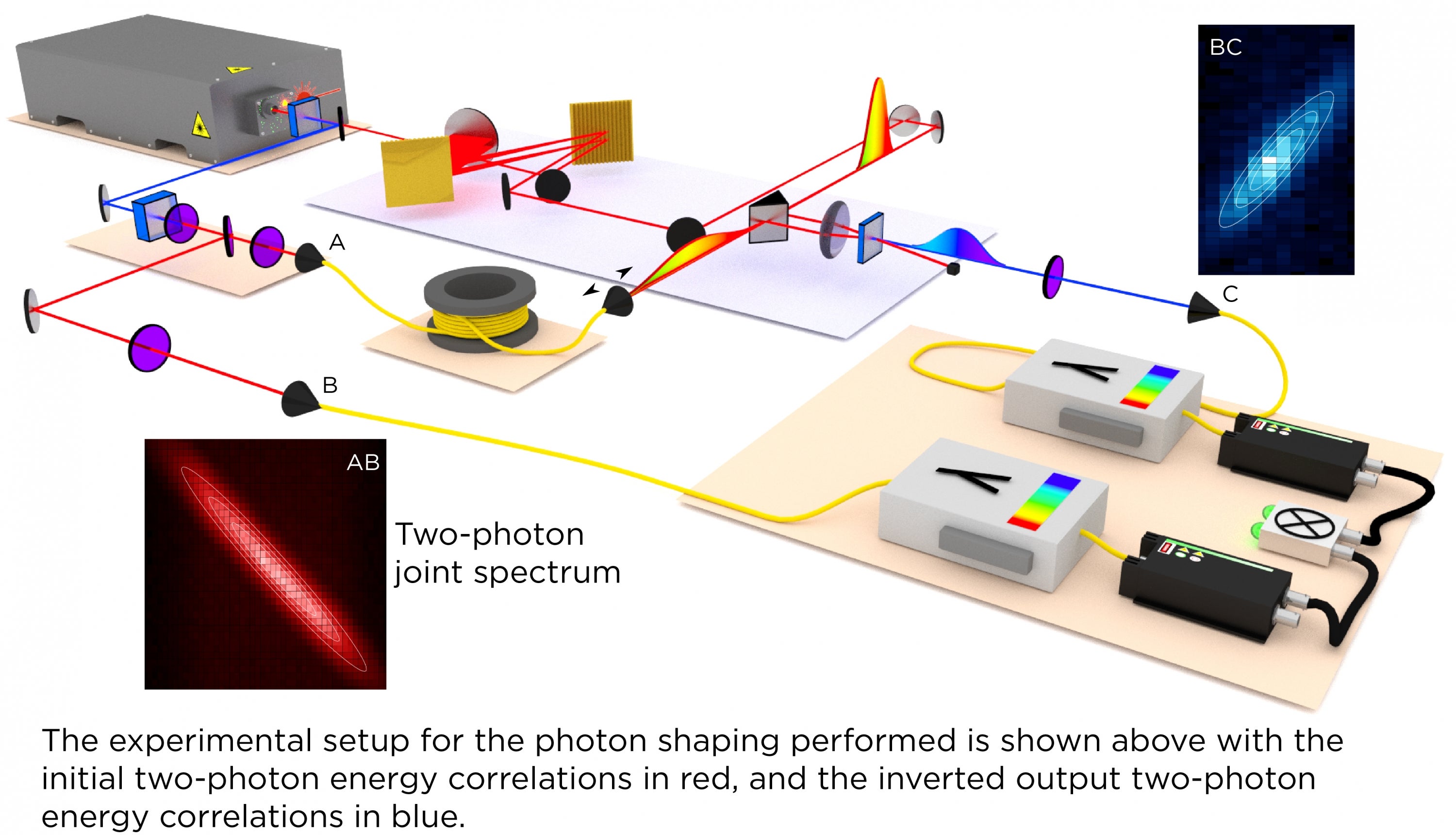A team of researchers from the Institute for Quantum Computing (IQC) has developed a process for reshaping the entanglement of two photons, demonstrating a new set of tools useful for quantum-state engineering.
“We have found a way to manipulate the colour and shape of an entangled photon that flips the energy and time correlations using non-linear optics, without relying on a specially engineered source to do the trick,” said John Donohue, a PhD student in the Department of Physics and Astronomy and lead author on the experiment. “For tasks that need a specific initial quantum state, this process may be practical.”
Information can be encoded in the colour and shape of a photon, or unit of light. A photon's spread of colours makes up its energy spectrum, and also determines its shape as a pulse in time. Processes such as the one demonstrated by the team of IQC researchers can shape the energy correlations of entangled photon pairs by manipulating the photon's spectrum, and may be used for ultrafast photonic information processing, interfacing different quantum systems, or quantum state engineering and control.
“The method itself can be generalized in several ways, which may lead to new kinds of entangled states,” said Kevin Resch, Canada Research Chair in Optical Quantum Technologies and Donohue’s supervisor.

The researchers created entanglement through a process known as spontaneous parametric down-conversion, where a photon from a bright laser pulse is split in two. Next, one of the two down-converted photons was sent through an optical fiber to spread out its colours in time through a process called dispersion. Dispersion, which describes how different colours of light travel at different speeds in a material, can cause problems for telecommunications efficiency through optical fibers, however in this case the team used the effect as a tool.
The dispersed photon was then mixed in a nonlinear crystal with a strong laser pulse that had been dispersed in the opposite direction. If the photon and the strong pulse are both in the crystal at the same time, they may combine and produce a photon at a higher energy level through a process called sum-frequency generation. When combined, the researchers could control the transformation between an input photon colour to an output photon colour, allowing for precise re-shaping of the photon's energy spectrum.
Single-photon sensitive spectrometers were used to measure the energy spectrum of the re-shaped photon and its partner from down-conversion simultaneously. The results showed that the dispersion process magnified the spectrum of one photon, similar to how a lens can be used to magnify the shape of a laser beam. The energy spectrum of the initial photon was inverted, showing a flip in the energy and time correlations of the two entangled photons.
“The next steps will be to improve the efficiency rate of the process,” said Donohue. “Engineering the experimental set-up to compact its size will also improve its practicality for future experimental uses.”
The paper Spectrally engineering photonic entanglement with a time lens was published in Physical Review Letters on December 6 by Donohue, Resch, and Master’s student Morgan Mastrovich. During the experiment, Mastrovich was attending the Undergraduate School on Experimental Quantum Information Processing (USEQIP).